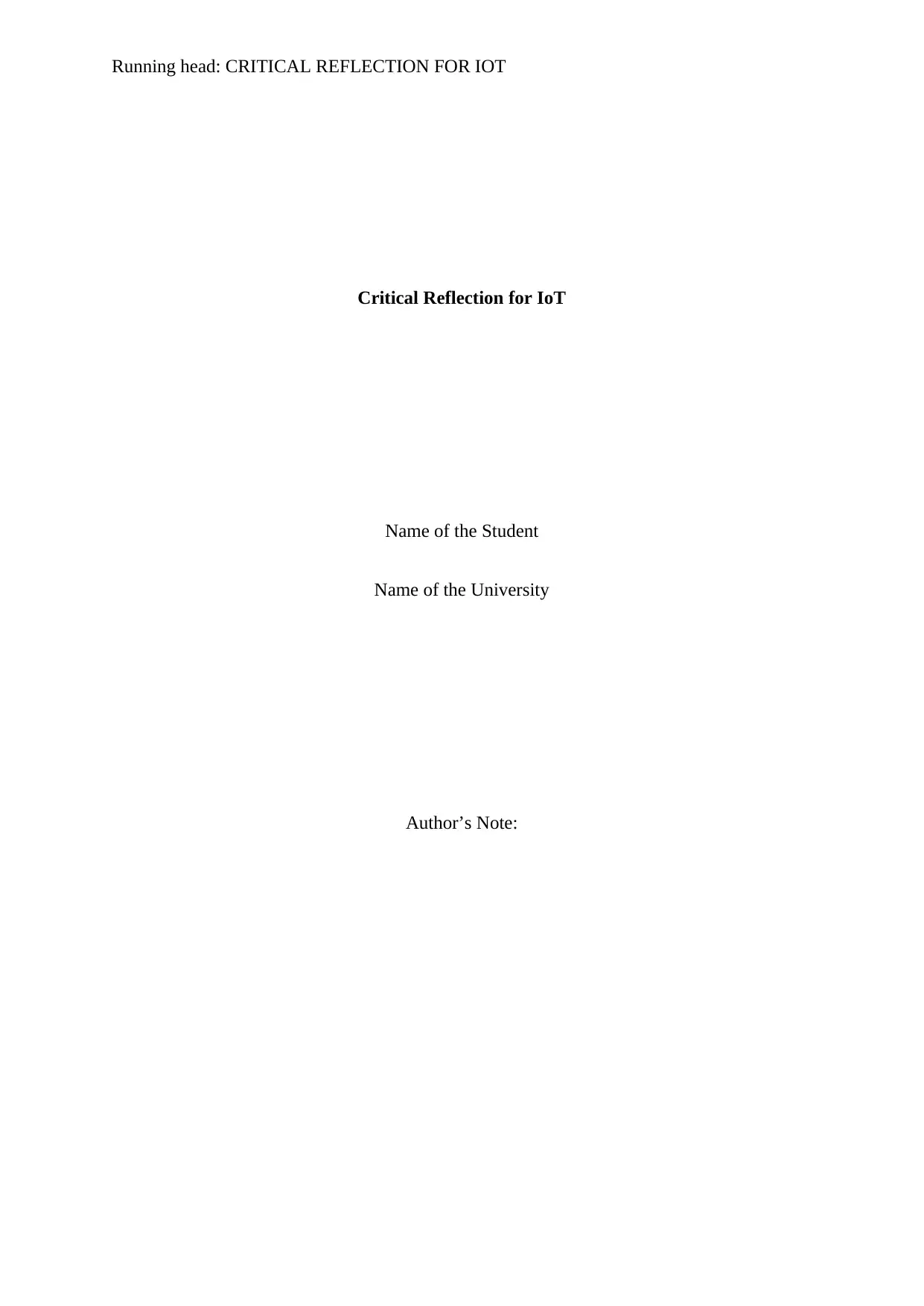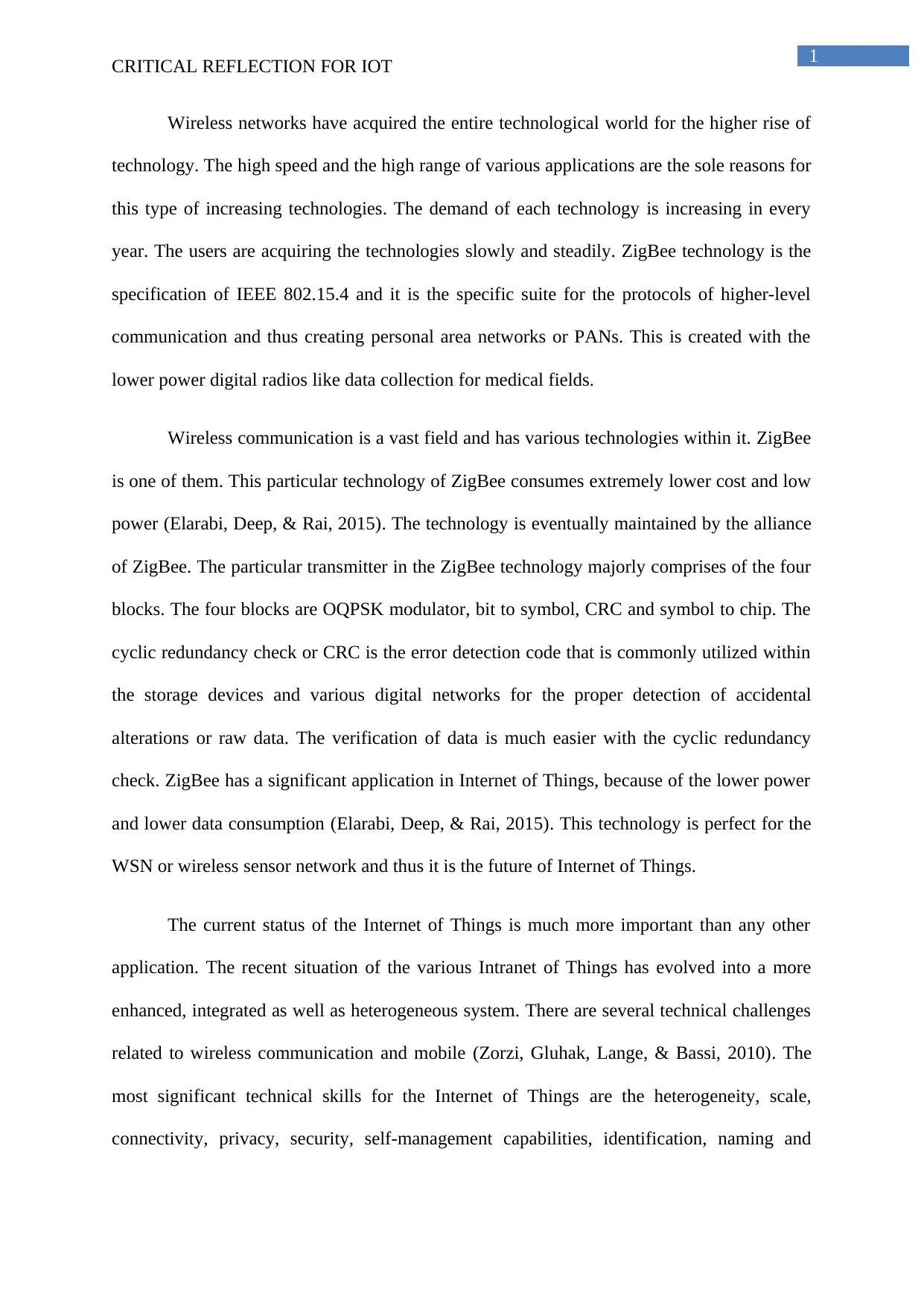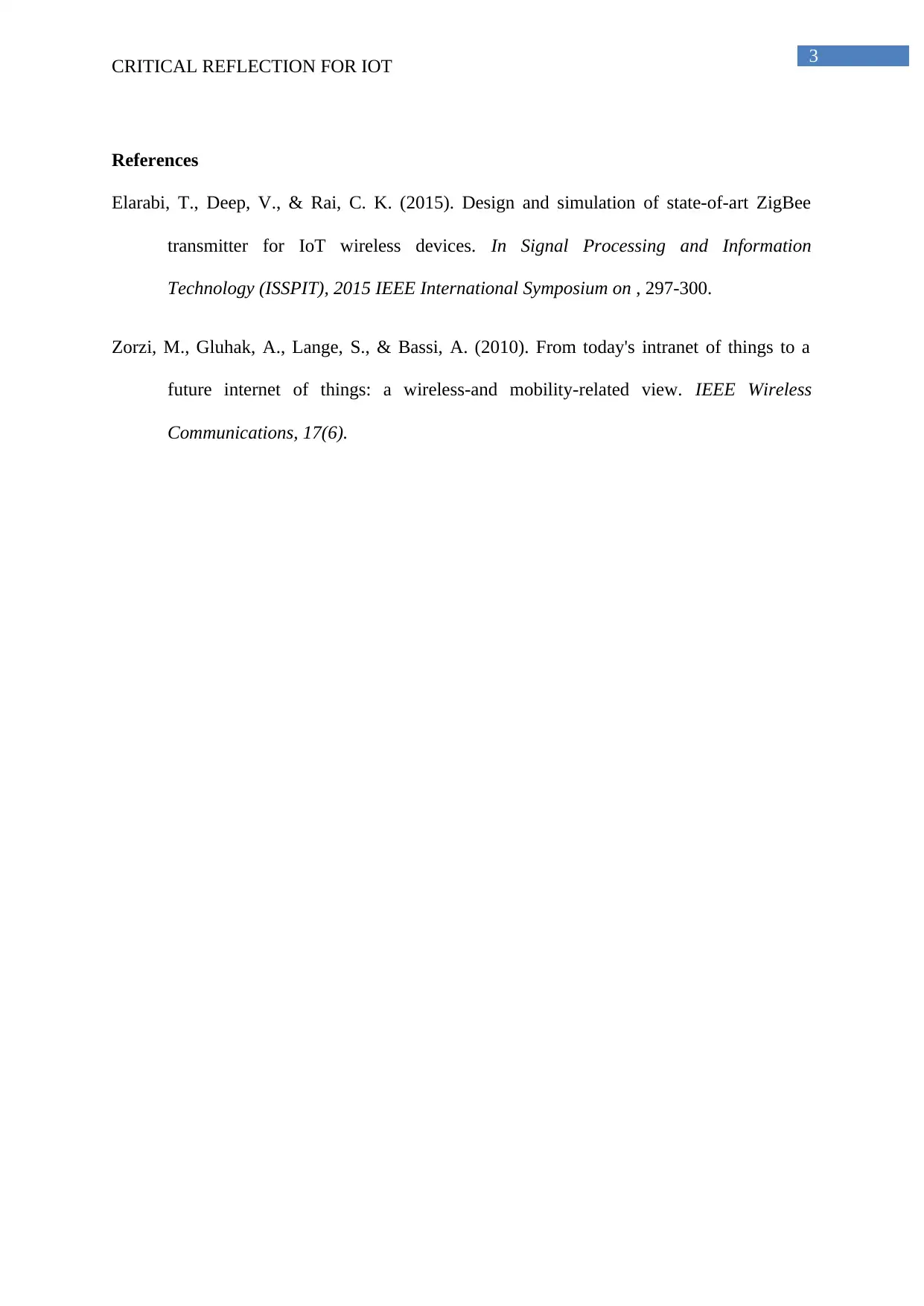University of Example: Critical Reflection on IoT Technologies
VerifiedAdded on 2021/05/31
|4
|529
|150
Report
AI Summary
This report provides a critical reflection on Internet of Things (IoT) technologies, focusing on the application of ZigBee technology within wireless sensor networks (WSN). The report examines the benefits of ZigBee, such as its low power consumption and suitability for data collection. It delves into the technical aspects of ZigBee, including the OQPSK modulator, bit-to-symbol conversion, CRC, and symbol-to-chip conversion, highlighting its role in error detection. The report further discusses the current status of IoT, emphasizing its evolution into a more integrated and heterogeneous system. Challenges related to wireless communication and mobile technologies, such as heterogeneity, scalability, connectivity, and security are also addressed. Finally, the report references relevant academic sources to support its analysis and conclusions, offering insights into the future of IoT and the role of ZigBee within it.
1 out of 4





![[object Object]](/_next/static/media/star-bottom.7253800d.svg)